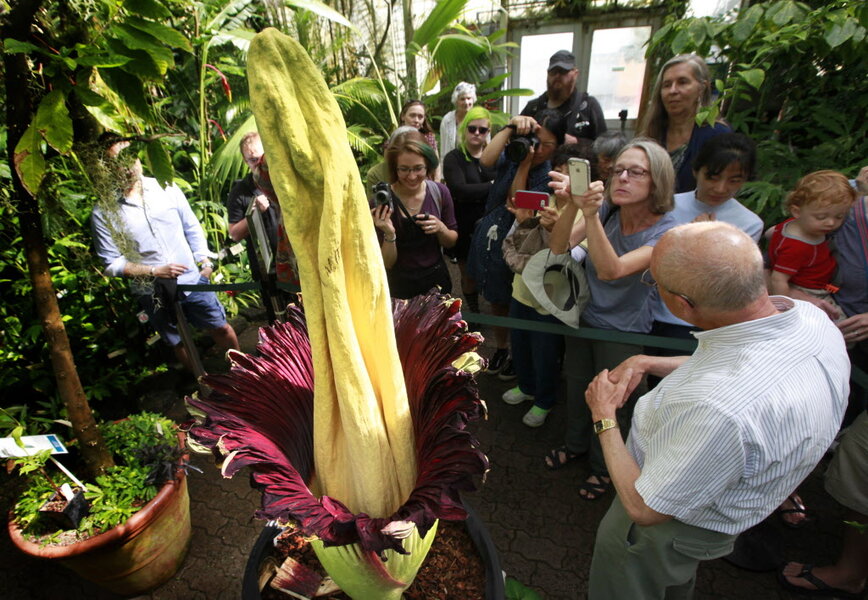Rare corpse flower blooms unexpectedly in Chicago
Loading...
A new corpse flower is blooming at Chicago’s Botanical Garden, prompting massive crowds and plenty of opportunities for selfies with the beautiful, albeit smelly, flower.
Alice, as the plant is named, is a sibling to Spike, another corpse flower at the Botanical Garden who did not bloom as expected. Spike has since been moved to a different greenhouse, where he will be nurtured to flower in another three to five years.
"Given that titan arums [a.k.a. corpse flowers] are notably unpredictable flowering plants (and we should know!), we wanted to be sure that [Alice] would bloom before we announced her debut," a statement on the Botanical Garden’s website reads.
Native to Indonesia, the corpse flower can stand as tall as ten feet when fully in bloom. Alice, when she bloomed this morning, stood at 55 inches, with a girth of 35 inches, her full height. She will start to get smaller over time.
Corpse flowers only bloom once every ten years, producing both a flower and a notoriously bad smell. The New York Times describes it as “like garbage. Or like something dying. It depends on whom you ask.”
“It’s human nature that we all want to smell something bad, I guess,” Tim Pollak, a floriculturist at the Chicago Botanic Garden, told the Times. “You know when someone smells something bad and they stuff it in your face? That’s what you get.”
That nasty smell is actually part of the plant’s contribution to pollination. Flies and carrion beetles, who typically feast on dead animals, are attracted both by the flower’s rotten odor and its warmth. When they crawl into the plant’s spadix, or thick interior axis, these insects are coated with pollen. They then cross-pollinate other corpse flowers when they either crawl or fly away.
The corpse flower is a species native to the Indonesian island of Sumatra. Alice is the latest in a host of corpse flowers to bloom successfully in captivity; this summer, a corpse flower in Denver attracted a crowd of about 12,000 people.








